Henrik Gabriel Porthan (1739–1804), librarian and professor of rhetoric and verse at the Royal Academy of Turku (the predecessor of the University of Helsinki), was a popular figure during the period of national awakening in 19th-century Finland. He is considered the father of Finnish historiography. The University of Helsinki’s Galleria Academica portrait collection contains a large number of sculptures, including a marble bust of Porthan wearing a wreath and a toga – our object of the month. The artist who created this work is Swedish-born Carl Eneas Sjöstrand (1828–1906). The sculpture is fairly heavy, coming in at 82.5 cm in height, and is accompanied by a mahogany pedestal measuring 151 cm.
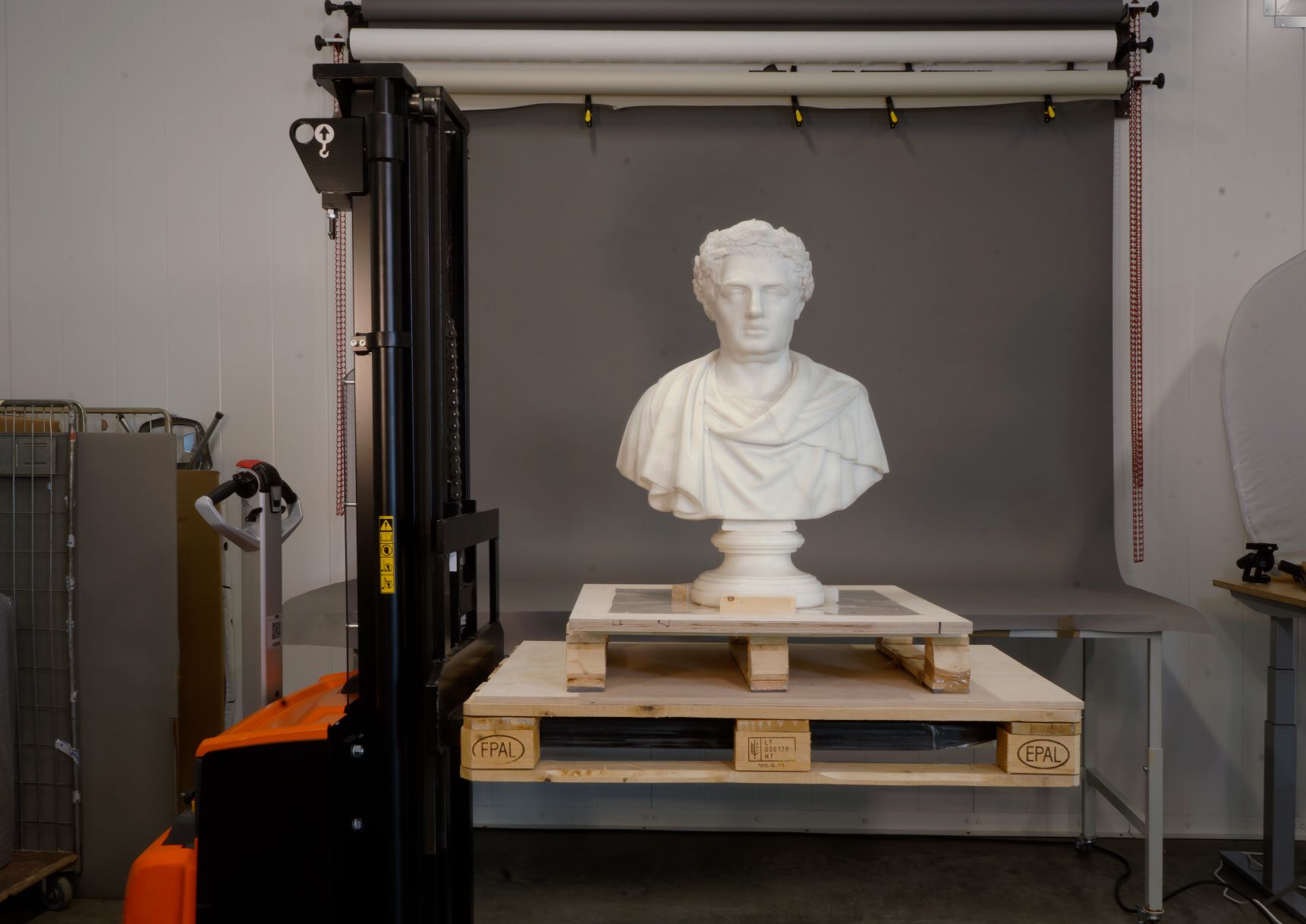
A Swedish sculptor
Carl Eneas Sjöstrand studied sculpture both in Stockholm, at the Royal Swedish Academy of Fine Arts, and in Copenhagen. In 1856 he was invited to Finland by Fredrik Cygnaeus, professor of aesthetics and literature and an active member of the Finnish Art Society. The purpose of the invitation was to commission a memorial of Henrik Gabriel Porthan from Sjöstrand, to be erected in Turku, as the first sculpture of a major public figure in Finland. At the time, Finland had no academically trained sculptors following the death of Erik Cainberg in 1816.
Porthan’s sculpture was delayed because Sjöstrand received a commission from students to create busts of a host of important Finns and travelled abroad to work on them. In addition to Porthan’s memorial, Sjöstrand made sculptures of Karl Collan, Frans Mikael Franzén, Mathias Calonius and Elias Lönnrot, among others. Porthan’s memorial was supposed to replace the bronze piece created by Tobias Sergel, which had been lost in the Great Fire of Turku (1827). The commission from students ultimately saved Sjöstrand financially, as the Porthan memorial was postponed for various reasons.
Although the Porthan sculpture had been planned from as early as 1854, it was eventually unveiled a decade later. The significance of this event in Finland at the time is reflected in the special arrangements made for the unveiling ceremony: the day was declared a national holiday, and schools and shops were closed. The town of Turku was decorated with hundreds of lanterns and flags.
Later, in the early 1860s, Cygnaeus invited Sjöstrand to teach sculpture at the drawing school of the Finnish Art Society, thus launching academic instruction in sculpture in Finland.
Porthan’s bust on display
The sculptures Sjöstrand had created in Germany were displayed in an art exhibition in Helsinki in early spring 1857. In addition to a plaster version of Porthan’s likeness, the items on display included a plaster bust of Vice-Chancellor Reinhold Munck; a clay maquette, or sketch, of the Porthan memorial; plaster medallions of Archbishop Jacob Tengström and F.M. Franzén, Bishop of the Diocese of Härnösand; and maquettes of two figures from the Finnish Kalevala epic, Lemminkäinen and Kullervo – Sjöstrand was interested in the Kalevala even before he moved from Sweden to Finland.
Julius Krohn, a student, described the exhibition in a letter dated 2 April 1857:
“However, highlights are the works by the Swedish sculptor Sjöstrand. He is now here to create a statue of Professor Porthan. Besides, students have commissioned him to make busts of Lönnrot and a few other renowned professors. It was also our wish to have Snellman’s likeness sculpted, but Snellman was vehemently against the idea. […] Sjöstrand will travel to Munich for the summer to cast all these works.”
The University commissioned a new version of Porthan’s bust based on the plaster sculpture displayed in the exhibition. The University wished for Porthan to be represented as a Roman philosopher with a toga and a laurel wreath. These elements had also been included in the bronze statue of Alexander II of Russia, at the time on display in the University’s Great Hall. As commissioned by the University, Sjöstrand created a new plaster maquette and the final marble version in Munich in early 1858. A few plaster casts were also made of Porthan wearing a wreath and a toga.
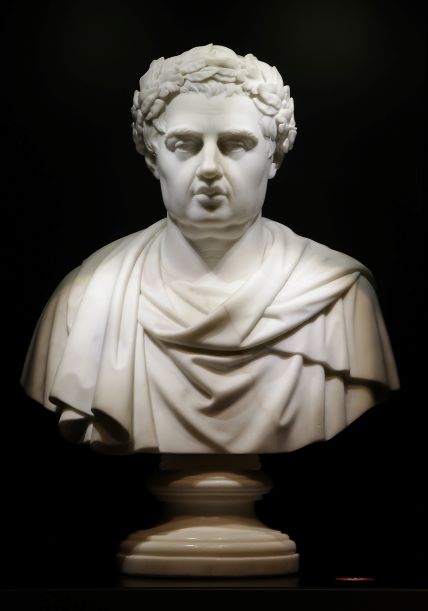
Swedish sculptor Carl Eneas Sjöstrand first created a plaster bust of Porthan and was then commissioned by the University to create a marble version with references to ancient philosophers in 1858. Photos: Timo Huvilinna, Helsinki University Museum.
Alt: A white marble bust of a short-haired man wearing a wreath and a robe, of which only the top part is visible. The bust is placed against a black background. The statue has a low, round base.
Soon after its completion, the marble sculpture was displayed in an exhibition at the University in autumn 1858. This exhibition was held in the Art Room, then located in the University’s Main Building, “to the right of the Great Hall”. Also on display was Sjöstrand’s Kalevala-themed sculpture Kullervo Tearing His Swaddling Clothes, which is now part of the collection of the Finnish National Gallery. The exhibition was open to the public from the beginning of October for four days a week, two hours at a time. The entry fee was 10 kopek. Sjöstrand hoped that the funds raised would be used for the construction of a student building.
The marble statue of Porthan wearing a wreath was placed on display shortly after its completion in the auditorium of the Faculty of Philosophy. In the early 1900s, both of Sjöstrand’s busts of Porthan were located in the facilities of Helsinki University Library. At the beginning of the 2000s, the marble version was moved to the fourth-floor exhibition room of the Arppeanum building, to become part of the permanent exhibition of the Helsinki University Museum, whereas the plaster version was relocated to the Topelia building. From 2015 to 2020, the marble sculpture was on display in the University Museum’s Power of Thought exhibition on the third floor of the University’s Main Building on Fabianinkatu street.
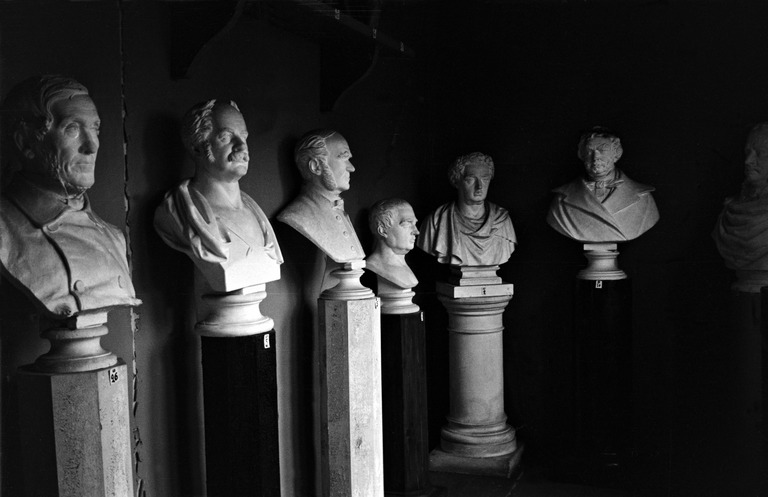
Other sculptures of Porthan
A small number of copies of the first Porthan sculpture, commissioned by students were, sold for 10 silver roubles by the Frenckell bookshop in Helsinki. Some of these copies can be found today not only at the University, but also in the collection of the Åbo Akademi University Foundation and at the J.L. Runeberg’s Home Museum in Porvoo, the Ostrobotnia building of the Ostrobothnian student nations, and the Student Union of the University of Helsinki.
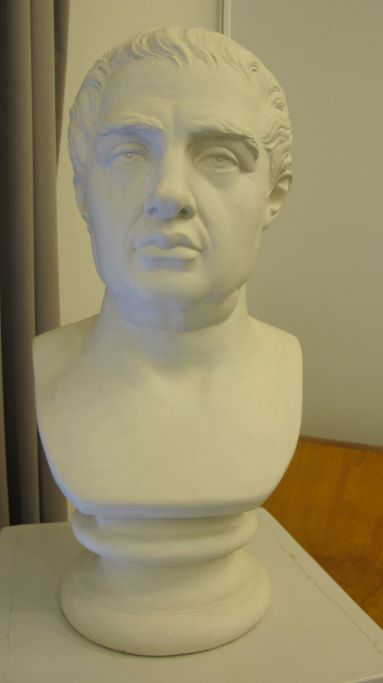
The Galleria Academica collection also includes a third sculpture depicting Porthan, purchased from an auction in 1832 for a collection of coins and medals to be accommodated in the University’s Main Building. It is a copy of Tobias Sergel’s bronze sculpture that was destroyed in 1827 during the Great Fire of Turku, when it ravaged the library of the Royal Academy of Turku. At the time, Sergel’s sculpture of Porthan was criticised for bearing no resemblance to Porthan. Critics called for a new memorial more in Porthan’s likeness. Consequently, people who had known Porthan were asked to describe his actual appearance.
Porthan’s memory lives on
For 25 years, Henrik Gabriel Porthan served as the official inspector of the Pohjalainen Osakunta student nation (association) representing students from the Ostrobothnia region of Finland. The current Ostrobothnian student nations – Pohjois-Pohjalainen Osakunta, Etelä-Pohjalainen Osakunta and Vasa Nation – have come together to honour their former inspector at the Porthan Gala held each year around 9 November since 1839, the centenary of Porthan’s birth.
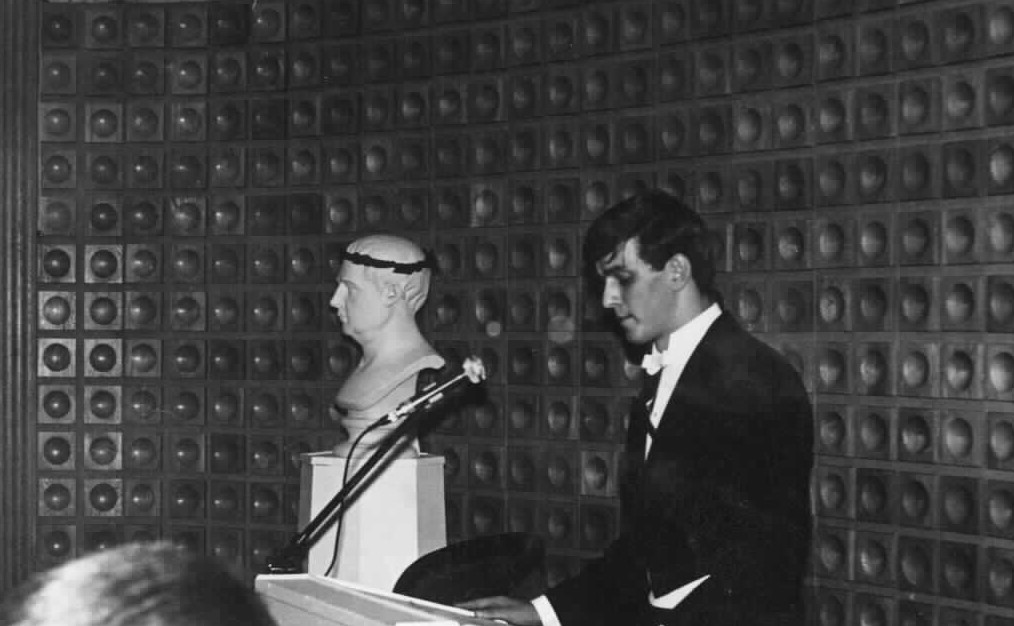
Porthan’s memory also lives on in the name of one of the University’s buildings. The Porthania building, designed by Aarne Ervi and completed in 1957 to accommodate several University departments and institutes, was named after Professor Porthan upon a proposal by Edvin Linkomies, then rector of the University and a scholar of Latin.
Pia Vuorikoski
Head of Exhibitions
Translation: University of Helsinki Language Services.
Sources:
Bertel Hintze: Helsingfors universitetets porträttsamling. Helsingfors 1927.
Julius Krohn: Nuoren ylioppilaan kirjeitä 1850-luvulta. Ed. Sari Forsström. SKS 2004.
Liisa Lindgren: Henrik Gabriel Porthan. https://kansallisbiografia.fi/english/person/2599
Helsingfors Tidningar, 25 February 1857, 25 April 1857.
Åbo Tidningar, 1 October 1858.
Carl Eneas Sjöstrand. www.lahteilla.fi
Porthan Gala. https://pohjalaiset.fi/porthan/
“Sjöstrand”. www.finna.fi
Helsinki University Museum’s database of images and physical objects
